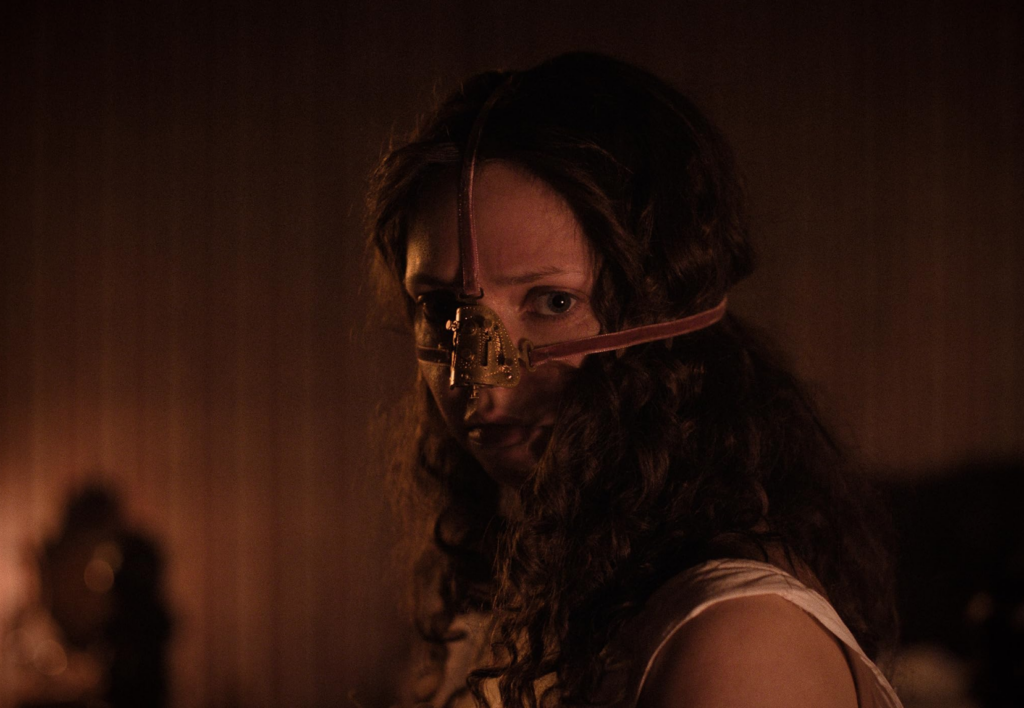The ten films in competition at the Flying Broom Festival, shown over a period of nine days, were very international and well selected. Almost half of the films were set in Muslim societies. In the Austrian film Moon (Mond) by Kurdwin Ayub, the protagonist travels to Jordan as a personal trainer to give sports lessons to the girls of a strictly religious upper-class family. The cultural clash is inevitable.
In Laila Abbas’ Thank You for Banking with Us a Palestinian-German co-production, we saw everyday life in Palestinian Ramallah, which can hardly be the same today as it was when the film was made. With the knowledge of today’s situation, this film was a true cinematic pearl, a valuable contemporary document of a lost world.

The screening of The Ugly Stepsister (Den stygge stesøsteren) by Emilie Blichfeldt was packed to the rafters, with crowds queuing for the last remaining tickets. Blichfeldt’s debut feature is a body horror reimagining of the Brothers Grimm’s Cinderella, telling the story of Elvira, who competes with her beautiful stepsister Agnes in a kingdom where beauty reigns supreme. Amid a ruthless race for physical perfection, Elvira turns to extreme measures in a desperate attempt to win the prince’s favor.
Norwegian director Emilie Blichfeldt was born in 1991 in a small village above the Arctic Circle. When asked what drew her to reinterpret the Cinderella fairy tale from the perspective of the stepsister, she responded in an interview: “I didn’t choose the role of the stepsister. She found me. The idea came to me during a creative power nap. In my imagination, I saw a young woman riding off on a horse with the prince. Then they both looked down and blood was dripping from her shoe. When I woke up, I was shocked to identify with a character I had never felt empathy for before. On the contrary, I had despised, mocked and even laughed at her. Suddenly I could feel her shame; the desperation of wanting to conform to an ideal of beauty – and failing to do so. At that moment, I realized: I am the stepsister too, just like everyone else. Each of us wants to fit into the shoe. And I asked myself why.”
With braces hiding crooked teeth, a rounded figure, and a misshapen nose, Elvira (Lea Myren)—the elder daughter of the elegant Rebekka (Ane Dahl Torp)—stands in stark contrast to her alluring stepsister Agnes (Thea Sofie Loch Næss). As the rivalry between them intensifies, the film rejects simplistic moral binaries of good and evil, instead offering a bleakly realistic vision beneath its grotesque imagery and eccentric flourishes. In this grim, far-from-fairytale society, where marriage is the only escape from material hardship, women are pitted against one another and judged solely on their physical appearance.
The costumes and sets are as meticulously period-accurate as the torturous beauty treatments Elvira endures in her desperate bid to win the prince’s attention. Nose clips, stitched-on eyelashes, even a tapeworm—gruesome details that reportedly caused a Sundance audience member to lose their lunch—are not fictional exaggerations, but procedures real women have undergone. Not out of vanity or privilege, as suggested by the superficial comparisons to The Substance, but because they live in a culture of beauty shaped by misogyny, materialism, and impossible standards. In such a system, women are given no real choice.
When asked about the themes explored in her film and whether there was a connection to Coralie Fargeat’s The Substance, Blichfeldt responded in an interview: “I understand that. And it’s interesting that two women are making films on this subject at the same time. The key difference is that Coralie Fargeat focuses on Hollywood and what it means to grow older in this system, especially if you’re a celebrity. For me, it’s about young people who lead a completely normal life. And although we both use the same cinematic means, especially body horror, the cinematic experience is quite different. The Substance is more formal, there’s this distance to the characters, everything seems superficial, it’s all about appearances. I wanted to tell a story in which you empathize with the characters. Maybe you could see it that way: The Substance is like my rebellious big sister.”
The appearance of the handsome prince—vied for by all the princesses—is striking, though he quickly reveals himself not as a romantic nobleman, but as a walking red flag of toxic masculinity. Elvira’s rival, the “beautiful” stepsister Agnes, dazzles on the surface but is hollow within—much like the other beauty-obsessed citizens of the kingdom of Swedlandia. The warped ideals of self-optimization under an unforgiving beauty regime soon upend our sympathies. We’re conditioned to believe that beauty equates to goodness, but the film dismantles this illusion. Swedlandia’s beauty standards, more aligned with today’s ideals than those of the Brothers Grimm, highlight the cultural and historical weight these images carry. Meanwhile, the ominous growl of Elvira’s tapeworm-ridden stomach serves as a grotesque warning: the cult of beauty has consequences, and there’s no guaranteed happy ending—not even in fairy tales.
Unfortunately, many film teams did not travel to the festival, resulting in only a handful of Q&A sessions. The interview quoted here was conducted during the Berlinale, where the film was featured in the Panorama section. For me, this screening in Ankara marked my second viewing of the film after seeing it at the Berlinale—and once again, I was struck by the realization that this subversive feature debut is a macabre masterpiece. Had there been an audience award at the Flying Broom International Women’s Film Festival, The Ugly Stepsister would surely have won it, judging by the enthusiastic response from the packed theater.
The 28th Flying Broom International Women’s Film Festival ended with a small get-together in one of the movie theaters. The FIPRESCI jury presented their award-winning film and then received a glass award bearing the festival’s motto: Unique Women – Unique Stories, so we left Ankara with this very true statement.
By Bettina Hirsch
Edited by Yael Shuv
@FIPRESCI 2025
